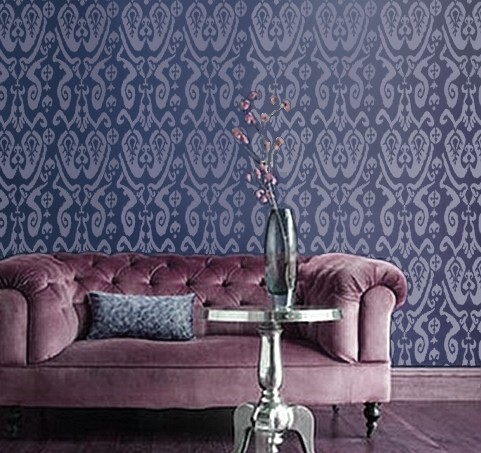
4 Tips for Stencilling a Wall

If you love the intricate patterned look of wallpaper, but don’t really like the hefty price tag, you may want to consider stencilling as an alternative means of wall décor. Stencilling is fun, DIY-able and stylish, all you need is a little bit of paint, a little bit of patience, and these four tips.
Apply paint with a dry brush method
To avoid seepage, bleeding, and drips that could ultimately disrupt your pattern work, dab your paint-dipped brush on a paper towel before each application to the wall. The same goes if you’re using foam rollers. Do a practice roll on scrap paper or napkins to get rid of excess paint that might be sequestered deep in the foam. If you’re going the roller route, opt for a high-density foam roller.
Apply a few coats
Using the dry brush method might mean that you may need a few rounds of paint to finish the job. If this is the case, don’t remove your stencil from the wall until you’re sure you won’t need any more coats of paint. If you remove your stencil from the wall, especially before the paint is dry, you run the risk of warping your design, and if you try to reapply the stencil you may end up misaligning it to the existing patterns, ultimately messing with the integrity of the design.
Don’t underestimate the importance of measuring
Nothing’s worse than stencilling a whole wall, taking a step back and realizing that you’ve applied the pattern on an unsightly slant. Find a large ruler and mark up your wall with pencil and grid style, to ensure that when you apply your stencil, it is straight and at an appropriate angle to all corners and edges.
Stencil from ceiling to floor
Just like you would paint starting in the corners and working towards the doorway if you were painting your floor, there’s a certain strategy to stencilling your wall. You always want to go ceiling to floor, and your best bet is to begin in the center of your wall so that your patterning has a distinct and logical focal point.










